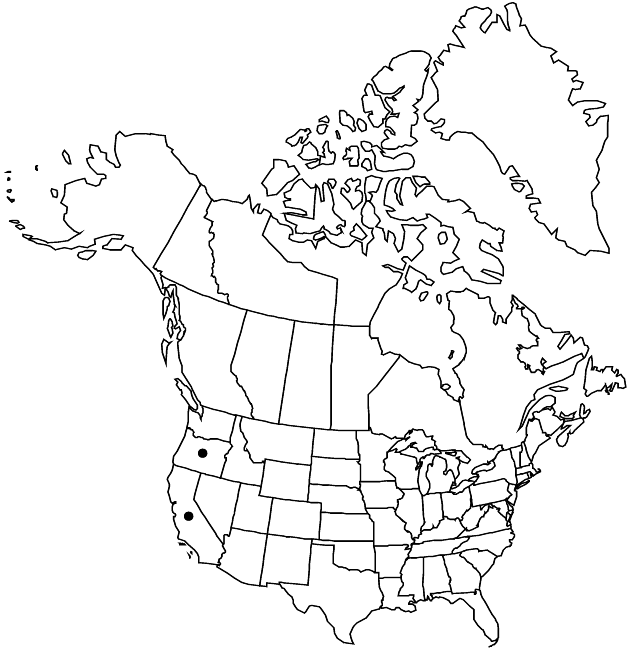Microseris acuminata
Bull. Torrey Bot. Club 10: 88. 1883.
Annuals, 5–35 cm; taprooted. Stems 0. Leaves basal; petiolate; blades linear to narrowly elliptic, 3–20 cm, margins usually pinnately lobed (with narrow rachis and linear lobes), rarely entire, apices acuminate, faces glabrous or lightly scurfy-puberulent. Peduncles erect or curved-ascending, ebracteate. Involucres ovoid to fusiform in fruit, 10–22 mm. Phyllaries: apices erect, acute to acuminate, abaxial faces glabrous; outer deltate; inner lanceolate, (midveins often purple, thickened). Florets 5–50; corollas yellow, equaling or surpassing phyllaries by 1–3 mm. Cypselae columnar, 4.5–7 mm; pappi of 5, white or light-brown, linear-lanceolate, aristate scales 4–11 mm (arcuate, scarcely involute, apices acuminate, faces usually glabrous, rarely villous, midveins brownish, stout, widths 1/5–1/3 bodies, tapered distally), aristae (white or brown) barbellate. 2n = 36.
Phenology: Flowering Apr–Jun.
Habitat: Clay soils, flats and hillsides, sometimes near vernal pools, grasslands and open oak woodlands
Elevation: 30–600 m
Distribution

Calif., Oreg.
Discussion
Microseris acuminata occurs in the Sacramento and northern San Joaquin valleys and surrounding foothills; it is disjunct in Jackson County, Oregon. K. L. Chambers (1955) proposed that this morphologically distinctive tetraploid species is of alloploid origin and that M. douglasii is one of its possible diploid parents. Recent molecular evidence (D. Roelofs et al. 1997) supports that relationship and also favors a relationship, through an extinct common ancestor, with the tetraploid M. campestris.
Selected References
None.
Lower Taxa
"fine" is not a number.